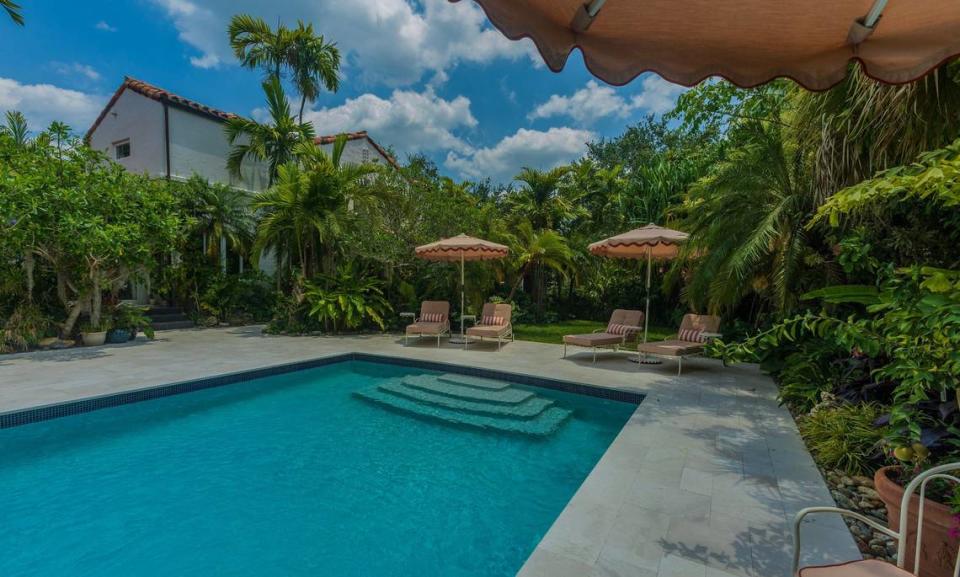Miami communities keep losing historic homes. How one village is pushing to save them
At a time when historic homes are being bulldozed in Coral Gables and Miami Beach, one Miami-Dade County village has rallied to preserve and celebrate its architectural heritage.
Miami Shores’ Historic Preservation Board organized a series of events this year to honor a community turning 100 years old. A now-gone real estate development firm, Shoreland Company, created a master plan in 1924. The village, sandwiched between Little River and North Miami, later incorporated in 1932. In the 1920s, only the wealthy could afford to buy homes in the area, and of the 9,000 original residences, only 121 remain.
On a recent May Saturday, five homeowners opened their Mediterranean Revival-style houses to neighbors and strangers for a Centennial Homes Tour. About 150 people navigated from house to house using a map with the names of current owners, addresses and descriptions of each home’s history. A volunteer welcomed guests at each door, and other guides spoke of the home and community’s roots. The event raised nearly $5,000 for community education programming at the community’s Brockway Memorial Library.
Even sweeter for the organizers, events like the Centennial Homes Tour have led to five other residents coming forward in the past two years to request guidance on how to designate their homes as historic. The last designation occurred 30 years ago. Municipal historic designation ensures a home’s protection against demolition from current and future owners.
“What we’re doing is preserving heritage that makes the village so special. That’s our goal,” said Jeffrey Saadeh, a member of the Miami Shores Historic Preservation Board. “We want to make sure that heritage is available to future generations.”
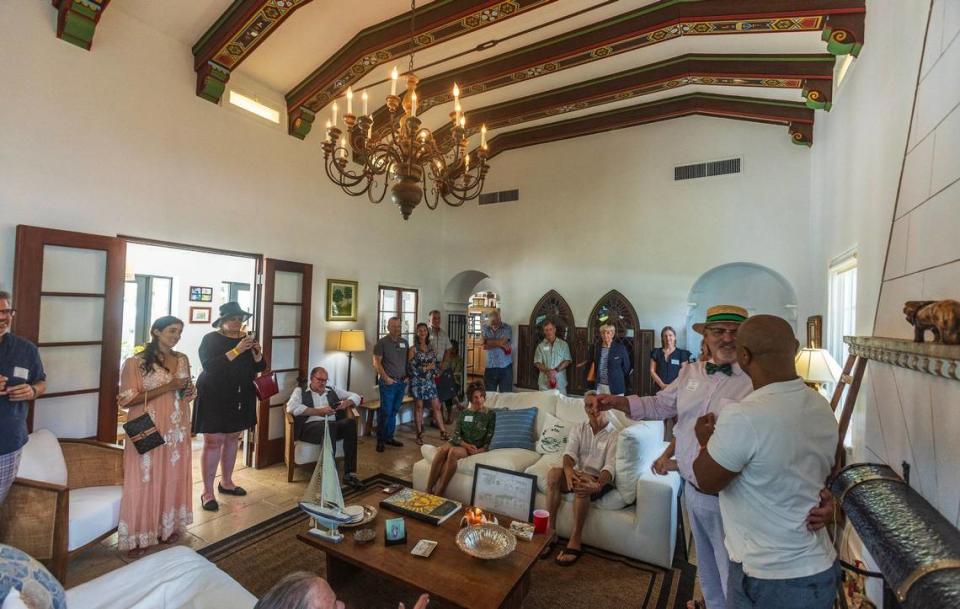
Miami Shores stands as a rare exception to the trend of owners razing historic residences in some of Miami-Dade County’s oldest communities, including Coral Gables, established in 1925, and Miami Beach, founded in 1915. Part of the reason is state legislation from 2022 that makes it easier for owners of residences in flood zones to bypass historic preservation boards and demolish at whim.
As a result, both cities lost lauded gems last year, including architect Alfred Browning Parker’s Gables Estates residence and mobster Al Capone’s final residence in Miami Beach. For now, most historic residences in Miami Shores sit safely beyond any flood zone.
Still, Miami Shores does face one countywide threat to preservation — increasing land values. The county’s single-family home prices hit record highs in March — an all-time high of $650,000 — and some areas including Gables Estate have seen values climb to the highest in the country, surpassing areas like Beverly Hills in California.
“The challenge is becoming like in other places,” Saadeh said. “Property values are getting that much more expensive so land value is very expensive. People want to be able to — if they buy a property — build something so they can take full advantage of the lot and build something that can sell for a lot of money. We have to be very vigilant about the assets in the village and meet that challenge.”
‘Not for everyone’
After his divorce, real estate investor Todd Leoni searched for a house in Miami Shores to escape living in the middle of construction work. In a drive around the neighborhood, he spotted a Kiehnel and Elliott-designed residence from 1925 at 284 NE 96th St. The two-story, 4,733-square-foot house was ideal for him and his four kids, and he bought it for $1.3 million in 2017.
The residence centers around a pool and fountain adorned with a lion’s head spouting water — a detail that resonated with Leoni, whose Italian surname commemorates the king of the jungle. Since moving in, he’s expanded the house to six bedrooms, four bathrooms and a powder room.
“I love just being in this house,” Leoni said. “It’s so fulfilling. Sometimes, I walk through my home and I have to pinch myself, because I can’t believe I get to live in this house.”
But the house requires constant work. After moving in, Leoni ripped out the wood floors in the studio above the two-car garage due to termite damage. He also redesigned the layout to better suit modern-day needs, building an expansive kitchen where there once was the master bedroom, and adding a new wing to house his master suite. Just a few weeks ago, he asked his handyman to retouch the paint on the wooden beams to breathe life back to the faded 1920s design.
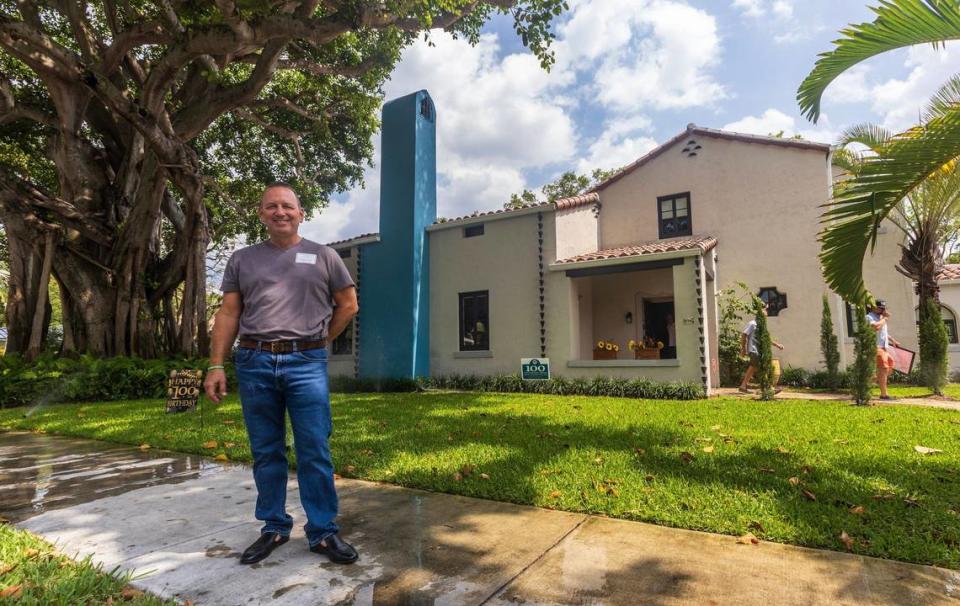
Some areas are still a work in progress, including two built-in cases in the living room. They sit empty, and Leoni contemplates during a house tour whether to use them to put books before quickly changing his mind with the thought of constant handling of the glass doors — “they look delicate.”
Although he finds charm in the constant maintenance and tending to details, Leoni said he believes homeowners should have the right to do whatever they like with their residence — keep the existing structure or raze it. He enjoys living in a historic residence, but knows it’s not for everyone.
“I love preservation, but it’s not for everyone,” Leoni said. “Sometimes it’s easier to demolish a home. I agree with the new legislation.”
Reviving history
Hugh Anderson, founder of the Shoreland Company, bought 2,800 acres of land in Miami Shores and nearby North Miami to build a community meant to rival growing hubs of wealth, including Coral Gables and Miami Beach, according to real estate agent and Miami Shores Village’s Historic Preservation Board Chair Patrizia Bonaduce. Bonaduce plans to publish a book about the history of Miami Shores’ historic residences and origins. She said the original plan for the community included 9,000 houses, railroad station, polo club, two golf courses and islands in the bay — today it’s Bay Harbor Islands.
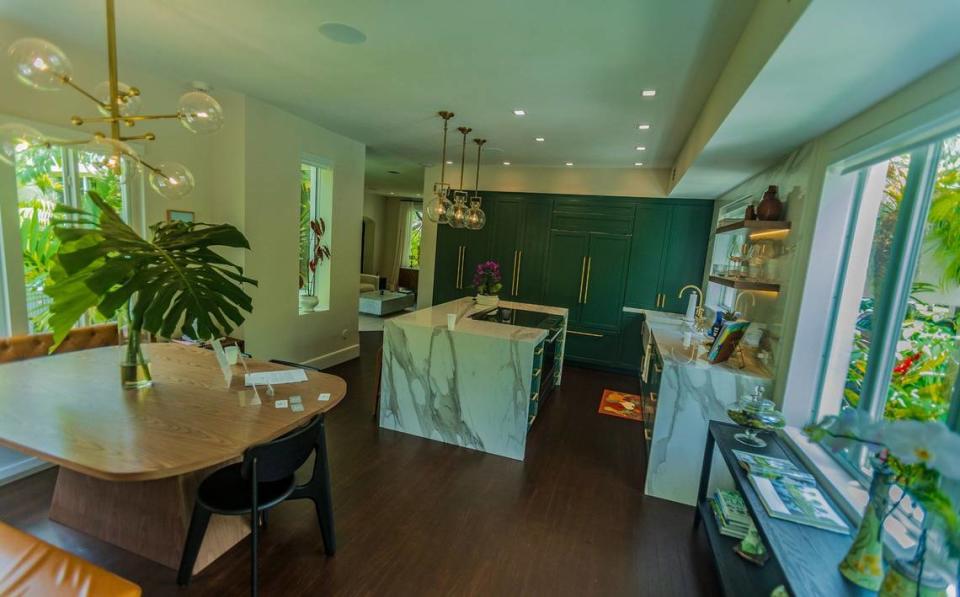
A Miami Shores home at that time cost between $10,000 and $16,000, or in today’s money $183,361 and $293,378, when the average salary ranged between $500 and $800 then, or $9,168 and $14,669 today. To attract that level of wealth, Anderson commissioned trendsetting architects to build enticing residences for the wealthy. One of them included Marion Manley, the second woman in the state of Florida to land an architect’s license and the first woman architect in South Florida.
In addition to working alongside George Merrick to design the University of Miami campus, Manley built a handful of residences in Miami Shores Village. Married couple Russ Colombo, a cardiologist, and Alain Carrazana, a landscape designer, live in one of her two-story houses at 477 NE 92nd St.
On this Saturday afternoon, people taking the tour walk around the three-bedroom, two-bathroom house. In the living room, a video plays on a flat screen TV, showing photos of Manley and living relatives discussing her life. Colombo and Carrazana even pay homage to Manley in one of the three themed bedrooms where photos of the home’s original design and blueprints line the walls and built-in shelves.
“Walking in we felt positive vibes. It felt beautiful and welcoming,” Colombo said.
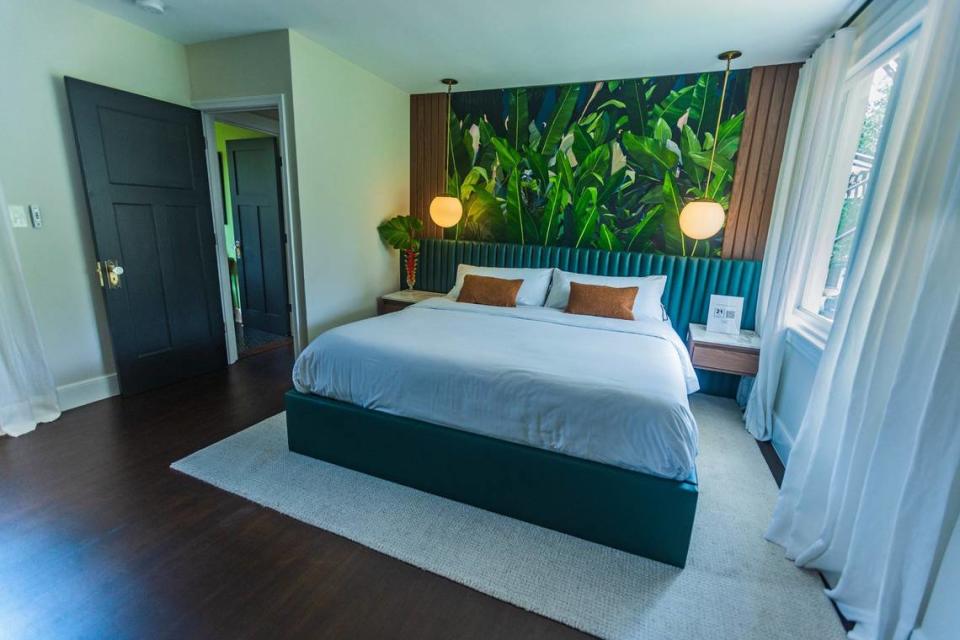
It was just what the doctor ordered, Colombo said. They lived at Quantum on the Bay at 1900 N. Bayshore Dr. in Miami, at a time when amenities were closed and the waterfront Margaret Pace Park was roped off to visitors for COVID social distancing. Colombo arrived from the hospital and waited nearly an hour every day for an empty elevator since they were always carrying four masked people, the maximum number allowed at that time. They bought the Miami Shores house in 2020 for $1.025 million.
Like many older residences, the house needed work. They learned the house had uneven floors and cloth-covered electrical wiring. To handle the renovation process, the couple hired interior designer Lissandra Castillo, owner of 21 design + construction. In addition to bringing everything up to code, projects included creating a master bathroom with a walk-in shower, closing a passageway under the staircase between the foyer and kitchen with a tropical-themed powder room, and building an expansive kitchen.
The couple moved into the house in 2022.
Still, work continues. Carrazana brought his landscaping talents to reimagine the foliage surrounding their lap pool. Next up is an outdoor kitchen.
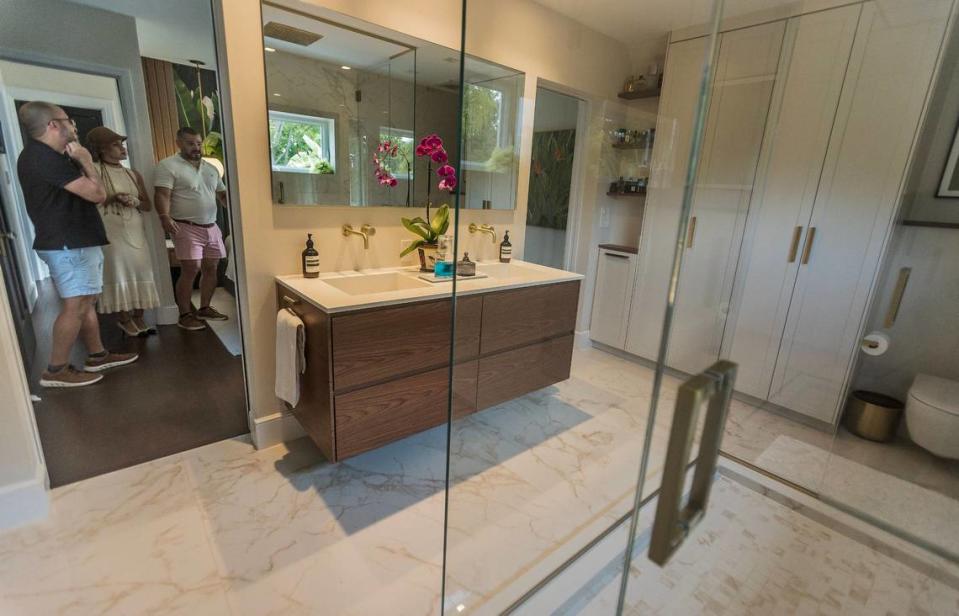
Imperfections mark the home, regardless of the amount of work and money invested. While homebuyers looking for the modern sugar-cube designs may stare wide-eyed at imperfections on the skirtboard frame of the staircase, Carrazana said it’s all part of the charm of living in a historic residence.
“You learn to love the imperfections,” he said. “It gives character.”
After the last visitors filed out of the house, Carrazana pulled a chilled bottle of his go-to Costco Kirkland Signature Marlborough ‘Ti Point’ Sauvignon Blanc.
For Carrazana and his husband, the home projects and upkeep on their historic residence never seem to weigh on them. It’s a labor of love for what Carrazana call their forever home.
